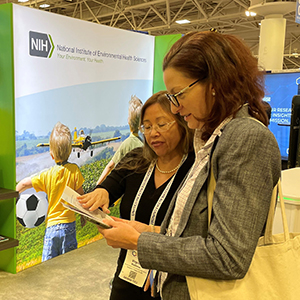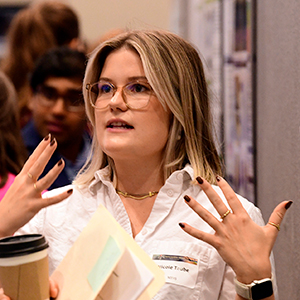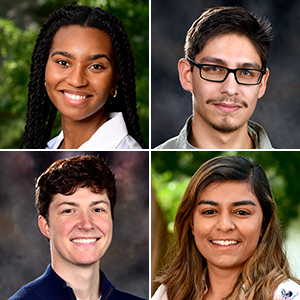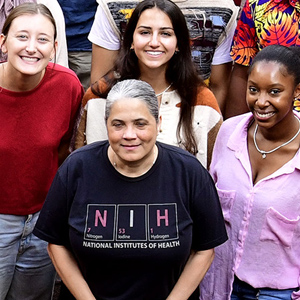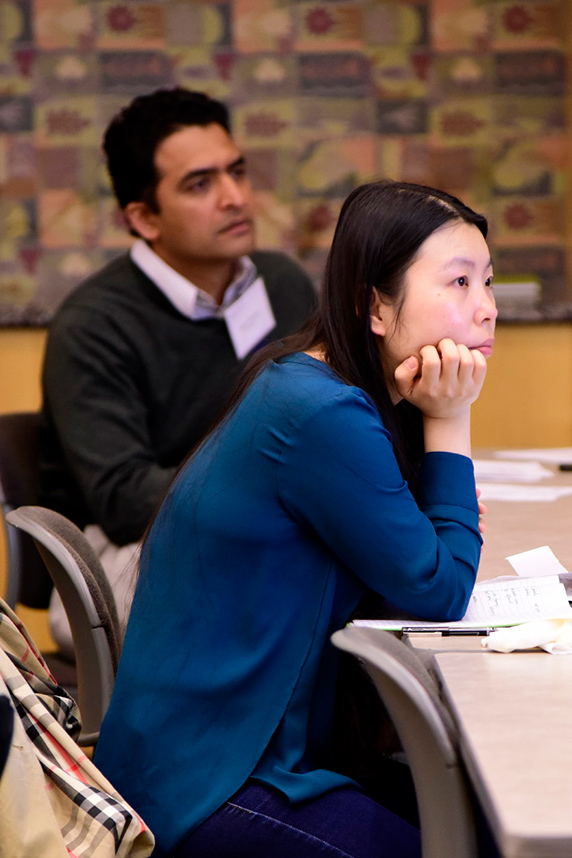 Pandiri, left, introduced the speakers at the April 16 meeting. Xu, foreground, was one of the trainees invited to present research (see sidebar). (Photo courtesy of Steve McCaw)
Pandiri, left, introduced the speakers at the April 16 meeting. Xu, foreground, was one of the trainees invited to present research (see sidebar). (Photo courtesy of Steve McCaw)Speakers at the spring meeting of the Genetics and Environmental Mutagenesis Society of North Carolina (GEMS) discussed the role of mechanistic data in toxicity testing and risk assessment, and other topics. The half-day gathering was held April 16 at the Research Triangle Park campus of the U.S. Environmental Protection Agency (EPA).
GEMS President-elect Arun Pandiri, Ph.D., head of the National Toxicology Program (NTP) Molecular Pathology Group, invited speakers from the local area. “We wanted to have a mixture of topics, and our presenters are experts on various aspects of toxicity mechanisms and risk assessment,” he said.
E-cigarettes and vaping
NIEHS grantee Ilona Jaspers, Ph.D., from the University of North Carolina at Chapel Hill (UNC), is working on experimental models to study potential hazards of vaping and e-cigarettes. She presented startling and often disturbing information about the widespread use of these devices — particularly among adolescents — and possible mechanisms behind the extraordinary danger vaping appears to present.
Data from the Centers for Disease Control and Prevention for 2018 showed that more than 20% of high school students had vaped or used e-cigarettes in the past 30 days, a figure Jaspers said was likely to be an underestimate. Research shows that vaping and e-cigarette use is far from harmless and presents many dangers.
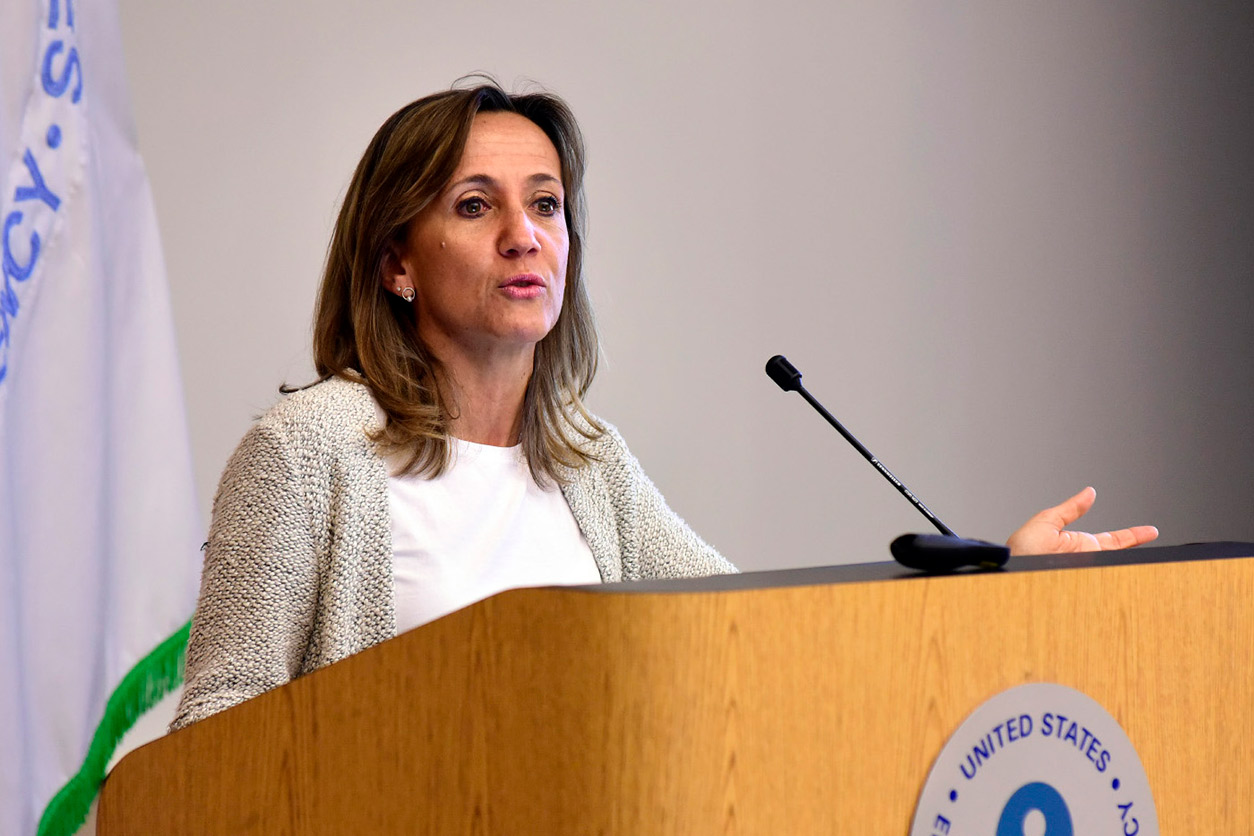 Case reports suggest that hypersensitivity pneumonitis, a disease unseen in cigarette smokers, might be linked with use of e-cigarettes, according to Jaspers. (Photo courtesy of Steve McCaw)
Case reports suggest that hypersensitivity pneumonitis, a disease unseen in cigarette smokers, might be linked with use of e-cigarettes, according to Jaspers. (Photo courtesy of Steve McCaw)New diseases unlike those traditionally seen in cigarette smokers will likely emerge in e-cigarette users, according to Jaspers. Her lab is documenting this phenomenon and developing new methods to detect novel, damaging health effects, particularly from inhalation of commonly used chemical flavorings.
She noted that most of these chemical flavorings are generally recognized as safe by the Food and Drug Administration for ingestion. However, when vaping, the route of exposure is by inhalation and that presents different risks.
Mutational signatures
Natalya Degtyareva, Ph.D., a scientist in the NIEHS Mutagenesis and DNA Repair Regulation Group, described her research on mutational signatures of oxidative, or redox, stress and aging. Mutational signatures are patterns of genetic mutations that characterize certain cancer types.
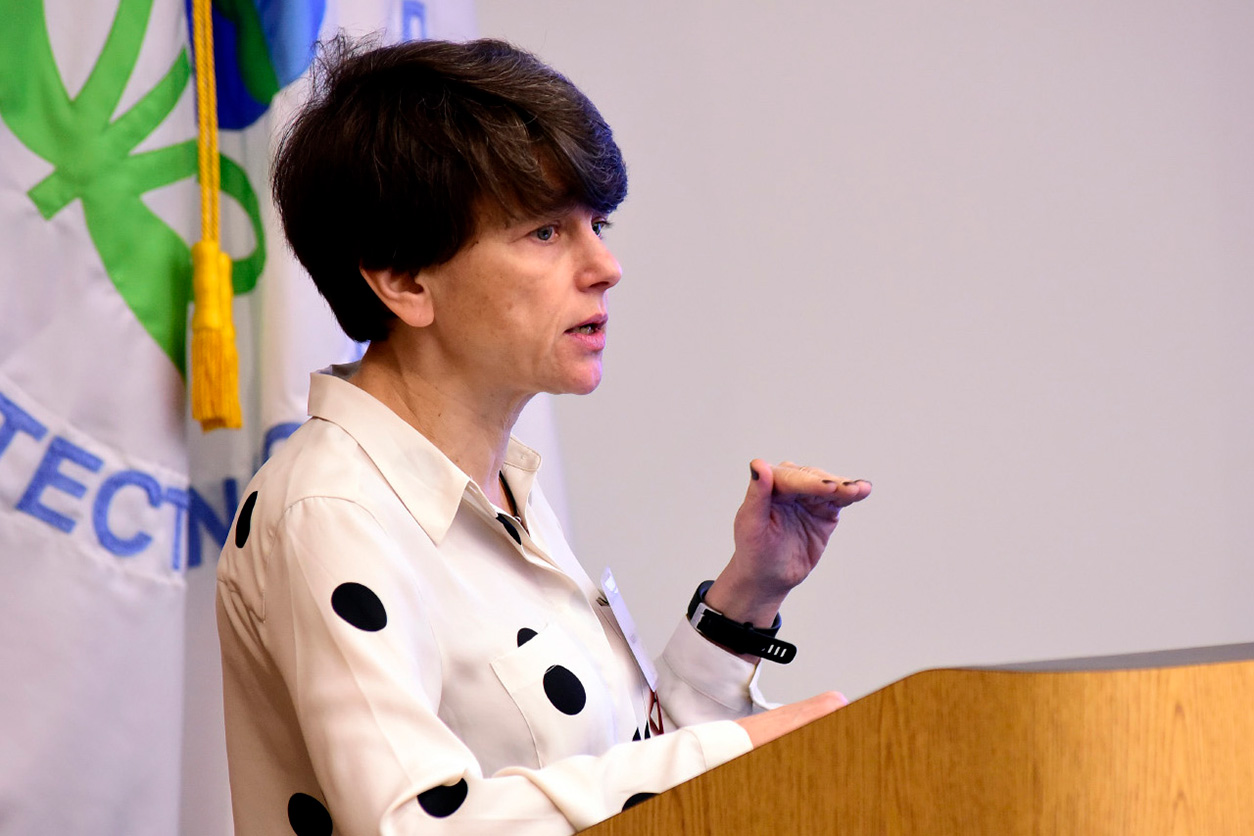 Degtyareva noted that redox stress is one of the hallmarks of cancer. (Photo courtesy of Steve McCaw)
Degtyareva noted that redox stress is one of the hallmarks of cancer. (Photo courtesy of Steve McCaw)“The major question is, is there a mutational signature of redox stress in human cancer?” she asked. She identified novel signatures of oxidative stress through her work on yeast systems and is currently examining human tumors for those signatures.
“The bottom line is that indeed we do see some evidence of oxidative stress in cancer,” she noted. This signature could prove useful in searching for highly oxidative stressful environments in human tissue or blood, and as a biomarker of exposure.
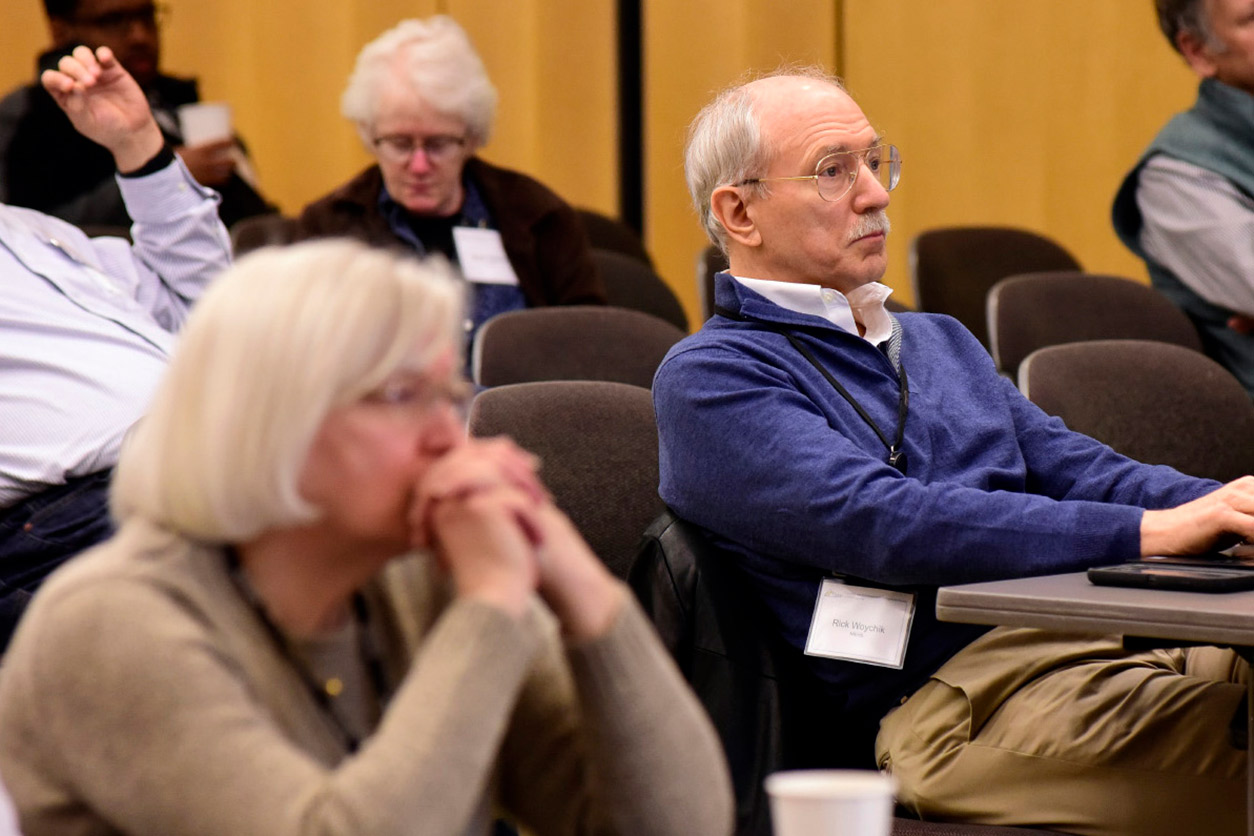 NIEHS Deputy Director Rick Woychik, Ph.D., right, was among the attendees and asked presenters several questions. NTP scientist Diane Spencer, left, is a charter member of GEMS. (Photo courtesy of Steve McCaw)
NIEHS Deputy Director Rick Woychik, Ph.D., right, was among the attendees and asked presenters several questions. NTP scientist Diane Spencer, left, is a charter member of GEMS. (Photo courtesy of Steve McCaw)EPA toxicologist Michelle Angrish, Ph.D., discussed how mechanistic data may be applied in chemical risk assessment by using adverse outcome pathway and systematic review approaches.
GEMS will meet again in the fall, when members will elect new society officers and enjoy more science updates.
(Ernie Hood is a contract writer for the NIEHS Office of Communications and Public Liaison.)





